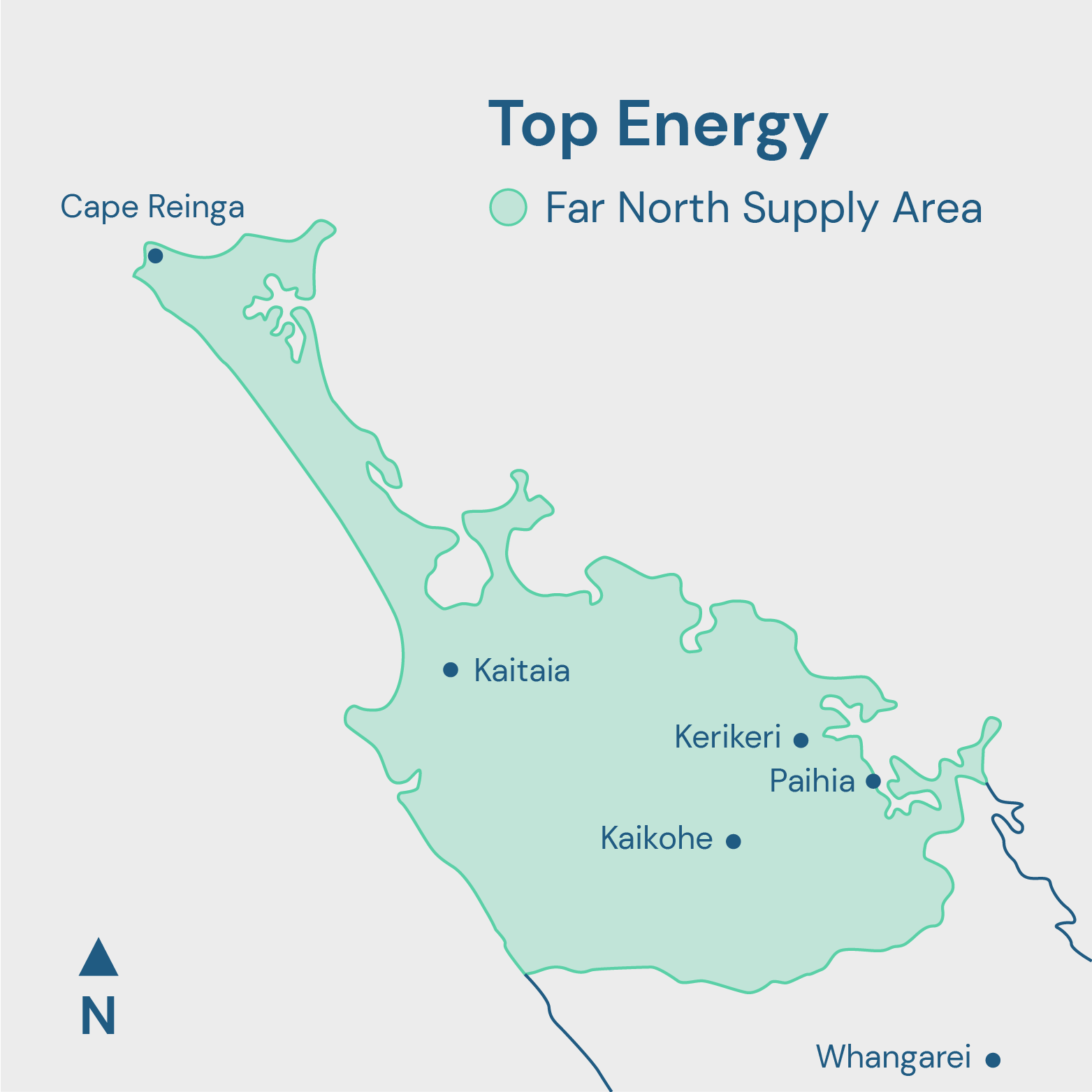CASE STUDY
How Top Energy improved data quality to support
advanced asset maintenance decision-making
Overview
INDUSTRY
Electricity distribution
LOCATION
Kerikeri, New Zealand
HV OVERHEAD LINE LENGTH
2,954km
CUSTOMERS
32,200
OWNERSHIP
Community owned
PEAK DEMAND
77MW
ANNUAL ENERGY DELIVERED
330GWh
Situation
Top Energy is the electricity network provider for the Far North, supplying power to more than 32,000 consumers. One of the largest businesses in the region, it manages assets of over $680 million and employs more than 150 staff.
Providing consumers with a reliable supply of power requires highly effective asset management capabilities supported by high-quality data.
Many of Top Energy’s customers are situated in rural areas, meaning the network has limited redundancy – when a fault occurs, the lights go out. The network can also be exposed to extreme weather.
To help reduce faults, Top Energy decided to improve how it plans and invests in maintaining and renewing its assets by using asset health models.
“The goal was to more efficiently deploy our network investment, as well as reduce unplanned outages caused by equipment in poor health,” says Elaine Collinson, GIS Team Leader at Top Energy. “To do that, we needed an asset information strategy that would ensure the right data at the right level of quality would be available to the asset risk models prior to commissioning.”
Elaine and her team chose DataFrame, with a key requirement being to minimise the impact on Top Energy’s busy engineering and information management teams.
“…we needed an asset information strategy that would ensure the right data at the right level of quality would be available to the asset risk models prior to commissioning.”
Elaine Collinson
GIS Team Leader
Top Energy
Solution
The DataFrame team was on site at Kerikeri within three weeks. Working with Top Energy’s IT experts, they created more than 100 daily data quality checks to monitor the quality of critical data held in Top Energy’s asset management information systems.
The checks were customised based upon the criticality of the data, or in other words, the impact on the models if the data was unavailable or of poor quality. User-friendly dashboards were then commissioned and connected to Top Energy’s databases, meaning real-time insights could be discovered at a glance.
“We started seeing benefits almost immediately,” says Elaine. “DataFrame provided a rigorous approach that was quick and easy to implement, and because the system is so flexible it meant a wide range of data across our information systems could be accessed and harnessed.”
The final step was starting Asset Information Governance reviews, supported by the DataFrame team. Highlighting insights from the data-health monitoring enabled Top Energy’s data users to prioritise improvements across their network.
“Now we’re using DataFrame, it’s hard to imagine working without it,” says Elaine. “Because we’re getting better quality data, we now have greater confidence when making critical decisions that rely on that data. That’s crucial for an asset-intensive organisation like ours, and also reassuring for our customers.”
“DataFrame provided a rigorous approach that was quick and easy to implement, and because the system is so flexible it meant a wide range of data across our information systems could be accessed and harnessed.”
Elaine Collinson
GIS Team Leader
Top Energy
Through the DataFrame implementation process, Top Energy’s asset management processes were aligned with critical data quality requirements.
This diagram shows the configuration of Top Energy’s DataFrame data model, and the linkages created between Top Energy’s Maintenance Planning strategy, the risk models for the different asset fleets, and over 100 data quality checks required to quality assure data inputs.
Team alignment
By establishing asset information governance, the Top Energy team successfully brought together data collectors, custodians and customers. This collaboration led to better decision-making as well as a shared sense of responsibility for data quality.
Results
Rapid quality improvement
After implementing the DataFrame dashboards, a number of low-volume data defects were identified and resolved, quickly improving data quality for critical assets.
Ongoing improvements
Daily data checks were implemented and reflected in the dashboards to ensure opportunities for improvement were being identified and fed into maintenance planning.
Within 90 days of implementing DataFrame, data quality for Top Energy’s overhead distribution, subtransmission and low voltage assets improved by 14%, 50% and 60% respectively.
BOOK DEMO
See DataFrame in action
Want to get the full picture? Book a demo to see DataFrame in action, from the set-up, to the user-friendly dashboard, to the automated reporting.
In just 30 minutes, a DataFrame asset information specialist, will show how your business can generate better data to make better decisions.





